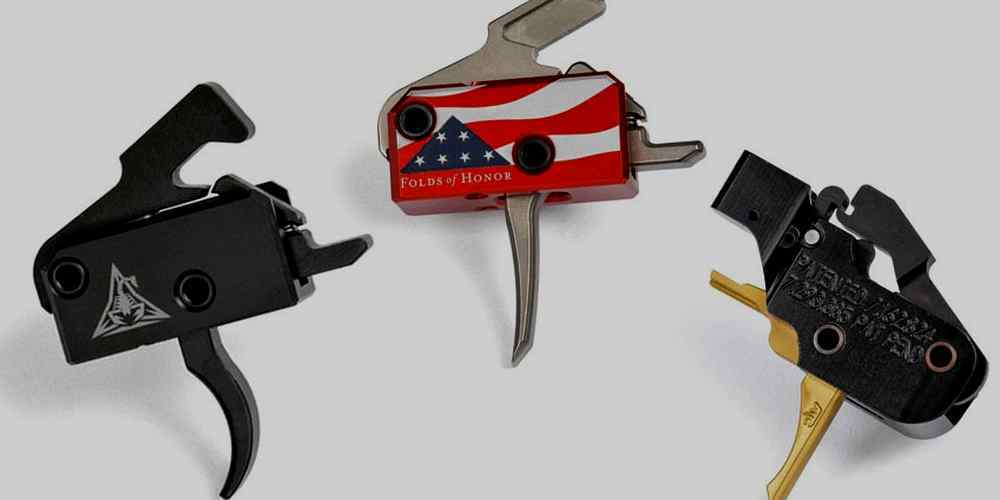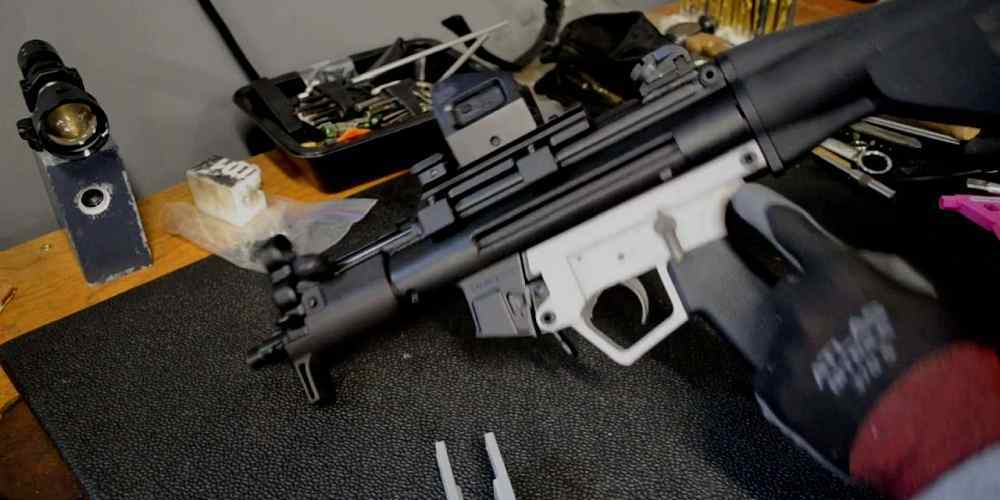“Stay safe, stay disciplined with Trigger Discipline training.”
Importance of Trigger Discipline in AR15 Handling
When it comes to handling firearms, safety should always be the top priority. This is especially true when it comes to the AR15, a popular and versatile rifle that requires proper training and discipline to handle safely. One of the most important aspects of safe AR15 handling is trigger discipline.
Trigger discipline refers to the practice of keeping your finger off the trigger until you are ready to fire. This may seem like a simple concept, but it is crucial for preventing accidental discharges and ensuring that you only fire your weapon when you intend to. Proper trigger discipline is a fundamental aspect of firearm safety, and it is essential for anyone who owns or handles an AR15.
When you are handling an AR15, it is important to always keep your finger off the trigger until you are ready to shoot. This means keeping your trigger finger indexed along the side of the rifle, away from the trigger guard. By keeping your finger off the trigger, you reduce the risk of accidentally firing the weapon if you stumble, trip, or experience a sudden jolt.
In addition to keeping your finger off the trigger, it is also important to maintain a proper grip on the rifle. This means keeping your hand firmly wrapped around the grip and ensuring that your fingers are not in a position where they could accidentally engage the trigger. By maintaining a proper grip on the rifle, you can better control the weapon and reduce the risk of accidental discharges.
Proper trigger discipline is not only important for preventing accidental discharges, but it also helps to improve your overall shooting accuracy. By keeping your finger off the trigger until you are ready to fire, you can take the time to properly aim and line up your shot. This can help you make more accurate shots and improve your marksmanship skills.
Training for proper trigger discipline is essential for anyone who owns or handles an AR15. This training should include practicing proper grip and finger placement, as well as learning how to safely handle and fire the rifle. By practicing good trigger discipline, you can help ensure that you and those around you stay safe while handling firearms.
There are a few key tips to keep in mind when practicing trigger discipline with an AR15. First, always treat the rifle as if it is loaded, even if you know it is not. This means always keeping the muzzle pointed in a safe direction and keeping your finger off the trigger until you are ready to fire. Second, practice proper grip and finger placement every time you handle the rifle, so that it becomes second nature.
In conclusion, trigger discipline is a critical aspect of safe AR15 handling. By keeping your finger off the trigger until you are ready to fire, you can prevent accidental discharges and improve your shooting accuracy. Training for proper trigger discipline is essential for anyone who owns or handles an AR15, and it is important to practice good habits every time you handle the rifle. By following these tips and practicing safe handling techniques, you can help ensure that you and those around you stay safe while using firearms.

Common Mistakes to Avoid When Practicing Trigger Discipline
When it comes to handling firearms, safety should always be the top priority. One of the most important aspects of safe gun handling is trigger discipline. Trigger discipline refers to the practice of keeping your finger off the trigger until you are ready to shoot. This simple yet crucial rule can prevent accidental discharges and potentially save lives.
One common mistake that many shooters make when practicing trigger discipline is keeping their finger on the trigger at all times. This can be a dangerous habit, as it only takes a split second for a finger to slip and accidentally pull the trigger. To avoid this, it is important to train yourself to keep your finger off the trigger until you are ready to fire.
Another mistake to avoid is resting your finger on the trigger guard. While this may seem like a safe alternative to keeping your finger on the trigger, it can still lead to accidental discharges. Instead, practice keeping your finger indexed along the frame of the firearm until you are ready to shoot. This will help you develop muscle memory and reinforce safe handling habits.
It is also important to be mindful of your grip when practicing trigger discipline. A proper grip can help you maintain control of the firearm and prevent your finger from accidentally slipping onto the trigger. Make sure to keep a firm grip on the firearm with your non-shooting hand while keeping your trigger finger indexed along the frame.
Another common mistake to avoid is rushing your shots. When you are in a high-pressure situation, it can be tempting to quickly pull the trigger without taking the time to properly aim. However, this can lead to inaccurate shots and potentially dangerous situations. Take the time to line up your sights and ensure that your target is in focus before squeezing the trigger.
It is also important to practice proper trigger reset when practicing trigger discipline. Trigger reset refers to the process of releasing the trigger just enough to reset it without fully letting it go. This can help you maintain control of the firearm and improve your accuracy when firing multiple shots. Practice resetting the trigger after each shot to develop this important skill.
Finally, it is crucial to always treat every firearm as if it is loaded, even if you know it is not. This mindset can help prevent complacency and ensure that you are always practicing safe gun handling habits. Always keep the muzzle pointed in a safe direction, keep your finger off the trigger until you are ready to shoot, and be mindful of your surroundings at all times.
In conclusion, trigger discipline is a fundamental aspect of safe gun handling that should never be overlooked. By avoiding common mistakes such as keeping your finger on the trigger, resting your finger on the trigger guard, rushing your shots, and neglecting proper grip and trigger reset, you can develop the skills necessary to handle firearms safely and responsibly. Remember to always prioritize safety when handling firearms, and never hesitate to seek out professional training if you are unsure of proper techniques. With practice and dedication, you can become a proficient and responsible gun owner.
Tips for Improving Trigger Discipline Skills
When it comes to handling firearms, safety should always be the top priority. One of the most important aspects of safe gun handling is trigger discipline. Trigger discipline refers to the practice of keeping your finger off the trigger until you are ready to shoot. This is crucial for preventing accidental discharges and ensuring that you only fire your weapon when you intend to.
For those who own an AR15, mastering trigger discipline is especially important. The AR15 is a powerful and versatile weapon, and proper handling is essential to ensure the safety of yourself and those around you. Fortunately, there are several tips and techniques that can help you improve your trigger discipline skills and become a more responsible gun owner.
One of the first things to keep in mind when it comes to trigger discipline is to always keep your finger off the trigger until you are ready to shoot. This may seem like common sense, but it is a rule that is often overlooked by inexperienced shooters. By keeping your finger off the trigger, you reduce the risk of accidentally firing your weapon and causing harm to yourself or others.
Another important aspect of trigger discipline is to maintain a firm grip on your weapon at all times. This not only helps you control the weapon more effectively but also ensures that your finger is less likely to slip onto the trigger unintentionally. Practice gripping your AR15 firmly and keeping your finger indexed along the side of the weapon until you are ready to fire.
It is also important to practice proper trigger control when shooting your AR15. This means applying steady pressure to the trigger without jerking or flinching. By practicing smooth and deliberate trigger pulls, you can improve your accuracy and reduce the risk of accidental discharges. Take the time to familiarize yourself with the trigger of your AR15 and practice dry firing to hone your trigger control skills.
In addition to practicing proper trigger discipline, it is also important to be mindful of your surroundings when handling your AR15. Always be aware of where your muzzle is pointing and never point your weapon at anything you do not intend to shoot. Treat every firearm as if it is loaded and always keep it pointed in a safe direction.
Finally, seek out professional training to improve your trigger discipline skills. Enrolling in a firearms safety course or working with a qualified instructor can provide you with valuable guidance and feedback on your handling techniques. By learning from experienced professionals, you can develop the skills and confidence needed to handle your AR15 safely and responsibly.
In conclusion, trigger discipline is a critical aspect of safe gun handling, especially when it comes to owning an AR15. By following these tips and techniques, you can improve your trigger discipline skills and become a more responsible gun owner. Remember to always keep your finger off the trigger until you are ready to shoot, maintain a firm grip on your weapon, practice proper trigger control, be mindful of your surroundings, and seek out professional training. With dedication and practice, you can master trigger discipline and enjoy the benefits of safe and responsible firearm ownership.
How Trigger Discipline Can Prevent Accidental Discharges
Trigger discipline is a crucial aspect of safe firearm handling, especially when it comes to the AR15. This popular rifle is known for its accuracy and versatility, but it can also be dangerous if not handled properly. Accidental discharges can occur if the trigger is not properly managed, which is why training in trigger discipline is essential for anyone who owns or uses an AR15.
One of the key principles of trigger discipline is keeping your finger off the trigger until you are ready to shoot. This may seem like a simple concept, but it is one that is often overlooked by inexperienced shooters. It is important to remember that the trigger is the only thing that can cause a firearm to discharge, so keeping your finger away from it until you are ready to fire is crucial for preventing accidents.
When handling an AR15, it is important to keep your finger indexed along the side of the rifle, away from the trigger guard. This not only helps to prevent accidental discharges, but it also allows you to maintain better control of the rifle. By keeping your finger indexed, you can quickly and easily move it to the trigger when you are ready to shoot, without the risk of inadvertently pulling the trigger.
Another important aspect of trigger discipline is being mindful of your surroundings. Before you even pick up your AR15, take a moment to assess the area around you and make sure that it is safe to shoot. This includes checking for any obstacles or people in the line of fire, as well as ensuring that your target is clear and unobstructed. By being aware of your surroundings, you can help to prevent accidents and ensure that you are shooting in a safe and responsible manner.
In addition to keeping your finger off the trigger until you are ready to shoot, it is also important to practice proper trigger control. This means applying steady pressure to the trigger without jerking or flinching. By maintaining a smooth and consistent pull, you can improve your accuracy and reduce the risk of accidental discharges. Practice dry firing your AR15 to develop good trigger control and get a feel for the trigger’s break point.
It is also important to remember that trigger discipline is not just about preventing accidental discharges, but also about maintaining control over your firearm at all times. By keeping your finger off the trigger and maintaining proper trigger control, you can ensure that you are always in command of your AR15. This is especially important in high-stress situations, where split-second decisions can mean the difference between life and death.
In conclusion, trigger discipline is a critical aspect of safe AR15 handling. By keeping your finger off the trigger until you are ready to shoot, practicing proper trigger control, and being mindful of your surroundings, you can help to prevent accidental discharges and ensure that you are shooting in a safe and responsible manner. Remember, safety always comes first when handling firearms, so make sure to prioritize trigger discipline in your training and practice.
Incorporating Trigger Discipline into AR15 Training Drills
When it comes to handling firearms, safety should always be the top priority. This is especially true when it comes to the AR15, a popular and versatile rifle that requires proper training and discipline to handle safely. One key aspect of safe AR15 handling is trigger discipline, which involves keeping your finger off the trigger until you are ready to shoot. Incorporating trigger discipline into your AR15 training drills is essential for developing good habits and preventing accidental discharges.
One of the first things to understand about trigger discipline is why it is so important. The trigger is the mechanism that fires the gun, so keeping your finger off the trigger until you are ready to shoot helps prevent accidental discharges. This is crucial for maintaining a safe environment, whether you are at the range or out in the field. By incorporating trigger discipline into your training drills, you can develop muscle memory and ensure that you always handle your AR15 safely.
One effective way to incorporate trigger discipline into your training drills is to start with dry fire practice. Dry firing involves practicing your shooting technique without live ammunition, which allows you to focus on your form and trigger control. During dry fire practice, make a conscious effort to keep your finger off the trigger until you are ready to shoot. This will help reinforce the habit of trigger discipline and improve your overall shooting skills.
Another important aspect of incorporating trigger discipline into your training drills is to practice proper finger placement on the rifle. When holding your AR15, your trigger finger should rest along the side of the rifle, outside of the trigger guard. This position helps prevent accidental discharges and allows you to maintain better control of the rifle. By practicing proper finger placement during your training drills, you can develop good habits that will carry over into real-world shooting situations.
In addition to dry fire practice and proper finger placement, incorporating trigger discipline into your training drills also involves practicing proper shooting techniques. This includes maintaining a stable shooting stance, aligning your sights, and controlling your breathing. By focusing on these fundamentals, you can improve your accuracy and ensure that you are always in control of your AR15.
Transitioning from dry fire practice to live fire drills is an important step in incorporating trigger discipline into your training. When practicing with live ammunition, it is crucial to maintain the same level of focus and discipline as you did during dry fire practice. Remember to keep your finger off the trigger until you are ready to shoot, and always be mindful of your surroundings and the safety of those around you.
As you continue to incorporate trigger discipline into your AR15 training drills, you will notice improvements in your shooting skills and overall safety. By developing good habits and practicing proper techniques, you can become a more confident and responsible shooter. Remember that safety should always be your top priority when handling firearms, and by incorporating trigger discipline into your training, you can ensure that you are always prepared to handle your AR15 safely and effectively.







